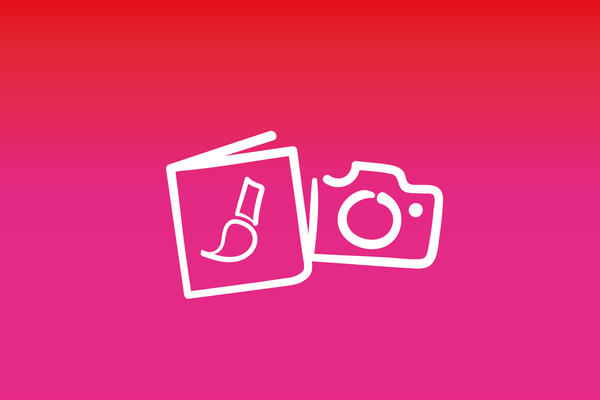
Art & Photography
Captured for eternity – breath-taking new releases from art, photography and fashion.
Focus on: Great masters, epochal art
Memories rich in images
Even as COVID-19 dominates the headlines worldwide, 2020 is more than the "Year of Corona". It is the year to commemorate many outstanding artistic personalities who were pioneers in their profession and vocation. Opulent art and photography volumes honour them.
Musical titan, epochal, ground-breaking, revolutionary. Hardly any other artist has been so heroically acclaimed – and embraced – as Beethoven. To mark the 250th anniversary of the composer's birth, the illustrated book "Beethoven Moves" has been published to accompany a remarkable exhibition at the Kunsthistorisches Museum Vienna. Artists engage with Beethoven and individual works at the museum in a very personal way, drawing inspiration and encouraging viewers to confront the genius with a kaleidoscope of new impressions.

Andreas Kugler, Jasper Sharp, Stefan Weppelmann, Stefan: Beethoven bewegt
(English: Beethoven Moves)
Hatje Cantz Verlag, 224 pages, 48.00 €
Il divino, the divine: Raphael, one of the most important artists of the High Renaissance, was bestowed and celebrated with superlatives during his lifetime. However, little is known about his life. On the occasion of the 500th anniversary of the death of the painter and master builder, art historian Arnold Nesselrath has published the illustrated book "Raphael!" with extensive illustrations and texts and, as the Vatican's longstanding restoration director, opens up new perspectives on the life and work of the artist.

Arnold Nesselrath: Raffael!
Belser, 224 pages, 89.00 €
The work of architect Zaha Hadid is pioneering and daring. A master of movement and flowing forms, she took a holistic approach to space, buildings and design. On almost 700 pages, the volume "Zaha Hadid", edited by Philip Jodidio, collects all the buildings, plus drawings by this visionary woman who died in 2016, and was the first woman to be awarded the Pritzker Architecture Prize.

Philip Jodidio: Zaha Hadid
Complete Works 1979 – Today. Taschen, 672 pages, 50.00 €
What all could the world have seen if filmmaker Rainer Werner Fassbinder with his restless creative urge had not died in 1982? This year the enfant terrible of New German Cinema would have been 75 years old. "Filmstills 1966-1982" shows 180 shots from almost all of his 44 film productions.

R.W. Fassbinder, Hans Helmut Prinzler, Peter Handke: Filmstills 1966–1982
Schirmer Mosel, 200 pages, 24.80 €
Unconventional snapshots on the film set, intimate portraits of superstars: Peter Lindbergh has compiled 150, partially unpublished black-and-white photos, from 40 years of his career. They are all in this self-curated collection of his work, finished shortly before his death last year. "Untold Stories" has now been published as a book of photographs, telling its own stories in the extraordinary visual language of the photographer who, like no other, abolished the boundaries between fashion photography and art, and shows the film and fashion icons of our time: simply as beautiful, strong women.

Felix Krämer, Wim Wenders, Peter Lindbergh: Peter Lindbergh. Untold Stories
Taschen, 320 pages, 60.00 €
Christo died before the planned wrapping of the Arc de Triomphe in Paris at the end of May. The illustrated book "Paris!" by Christo and Jeanne-Claude recalls the spectacular veiling of the Pont Neuf from 1975 to 1985, and the early Paris years from 1958 to 1964, where the artist couple's world career began with small wrapped everyday objects that are almost forgotten today.

Christo and Jeanne-Claude: Paris!
Texts by Sophie Duplaix et al.
Sieveking Verlag, 256 pages, 39.90 €
Before the coronavirus pandemic, the devastating fire of Notre Dame on April 15, 2019 was the initial reason why the veiling of the Arc de Triomphe was postponed. The illustrated book "Notre Dame de Paris" documents with historical drawings, paintings and photographs, 800 years of architecture, Parisian life and everything that Notre Dame has always been, is and will always be for Paris and people all over the world.

Lothar Schirmer: Notre-Dame de Paris
Pictures of a cathedral. Schirmer Mosel, 140 pages, 39.80 €
Text: Anita Strecker
4 reading tips
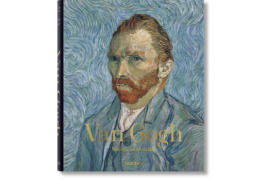
Ingo F. Walther, Rainer Metzger (eds.): Van Gogh. Sämtliche Gemälde
(English: Van Gogh. The Complete Paintings)
Taschen, 752 pages, 40.00 €
Ingo F. Walther, Rainer Metzger (eds.): Van Gogh. Sämtliche Gemälde
(English: Van Gogh. The Complete Paintings)
Taschen, 752 pages, 40.00 €
Hardly any other painter has inspired artists as much as he has. Hardly any other artist lets colours, light and shadow burst forth like he does. And virtually no other artist has moved exhibition curators around the world to look at his work from new perspectives time and again. Vincent van Gogh, genius, self-taught – who only began painting at the age of 27 – founded modern painting with his art. In a lavish picture book, Taschen Verlag collects all 871 of van Gogh’s paintings. Accompanied by writings and essays, the book traces the artistic development and difficult life path of this exceptional artist. (ana)
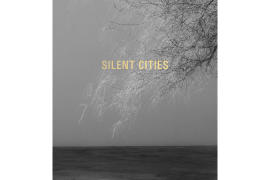
Mat Hennek: Silent Cities
Steidl, 96 pages, 45.00 €
Mat Hennek: Silent Cities
Steidl, 96 pages, 45.00 €
The coronavirus pandemic and the lockdown have shown how empty cities can be. Freiburg-born photographer Mat Hennek has travelled to cities all over the world and captured scenes devoid of people from Abu Dhabi to Tokyo to Munich. In this volume of photos, “Silent Cities,” Steidl Verlag has compiled 80 photographs in which nothing distracts from the aesthetic play of forms, colours, and structure. These are images that need no words; the captions only provide information about the location. “Silent Cities,” a silent ode to the art of photography. (ana)
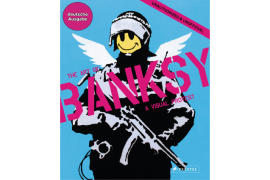
Gianni Mercurio (ed.): The Art of BANKSY
Prestel, 224 pages, 34.00 €
Gianni Mercurio (ed.): The Art of BANKSY
Prestel, 224 pages, 34.00 €
The girl with the balloon, the peace dove in a bulletproof vest – Banksy’s graffiti is famous all over the world. Yet few people know who this internationally celebrated street artist is, a man who stands up to the conventional cultural industry and who, paradoxically, has long been considered one of the most marketable contemporary artists. As a last bastion to avoid being absorbed by the establishment, Banksy has been able to maintain his anonymity to this day. The picture book "The Art of BANKSY" – with essays, photos, and material from his contemporaries – documents Banksy's career and artistic intentions first hand. (ana)
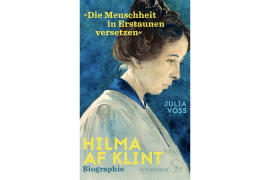
Julia Voss: Hilma af Klint – Die Menschheit in Erstaunen versetzen
(English: Hilma af Klint – Astounding Humanity)
S. Fischer, 600 pages, 25.00 €
Julia Voss: Hilma af Klint – Die Menschheit in Erstaunen versetzen
(English: Hilma af Klint – Astounding Humanity)
S. Fischer, 600 pages, 25.00 €
Hilma af Klint (1862-1944) was almost forgotten, not least because the Swedish artist had decreed that her works should remain hidden 20 years after her death. She had not only ventured into a male domain with her art, she also painted abstractly before Wassily Kandinsky, for instance, and was aware that she was far ahead of her time. Now Julia Voss has researched the life and work history of this extraordinary woman. At the same time, she reflects on the male-dominated art market in this vividly told, easily accessible biography. (sc)
Talk with: Heinz R. Böhme
Rediscovery of the “lost generation”
The volume "Wir haben uns lange nicht sehen" (English: We haven't seen each other for so long) introduces works and artists from the private collection of Heinz R. Böhme. For decades, the emeritus professor of medicine has been tracking down forgotten artists who were persecuted by the Nazis and showing them in his private museum in Salzburg. In an interview, he talks about his unusual commitment.
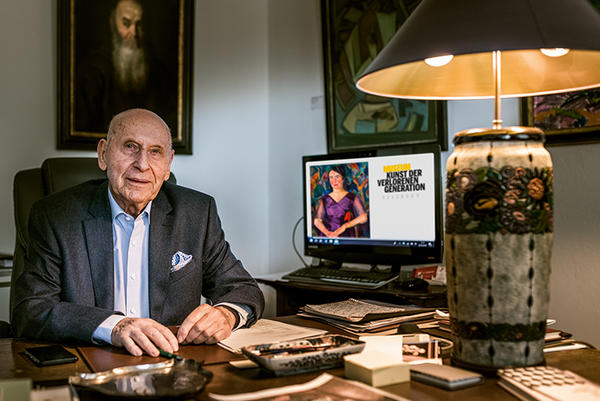
Herr Professor Böhme, you bring the so-called “lost generation” into the present day. How did you come to do this?
Heinz R. Böhme: Collecting has always been a hobby of mine. The reason for consistently pursuing this passion was a catalogue for an exhibition of the painter Ludwig Jonas (1887-1942) in Berlin in 1984, which I came across again when I was clearing out a bookshelf. It was coloured deep red and the photos were glued in by hand and therefore eye-catching. The exhibition was under the patronage of the Israeli ambassador. I read the biography of this painter whom nobody knew. Born in Bydgoszcz, he went to Berlin to study painting, emigrated to Paris and on to Palestine. Afterwards, I realised that there must still be many such artists who were persecuted and whose works were considered "degenerate". Bringing them back to the present became my task.
How do you find these artists? Many names are largely unknown.
My collection currently comprises about 400 works, mainly oil paintings. Finding them was not easy. Reading old art magazines, searching in auction catalogues and the internet often results in a hot lead. Further hints came with the realisation that the recognised painters of this time between 1920 and 1945 also had pupils, who were certainly not insignificant, but were forgotten by the turmoil of this time and became the “lost generation”.
What appeals to you more, tracking down people or finding a lost work of art?
It is a reciprocal relationship between the artist and the work. Especially the artists of the “lost generation” influence the content and expression of their works with their biography. In this way it is possible to unite art and contemporary history.

Heinz R. Böhme: Wir haben uns lange nicht gesehen: Kunst der Verlorenen Generation. Sammlung Böhme
(English: We haven't seen each other for so long. Art of the Lost Generation. The Böhme Collection)
Hirmer, 272 pages, 39.90 €
Why was it important for you to start your own museum?
The many works cannot be stored in a private living room. As a "loan" or the opportunity to work in a large museum, which I was offered, seemed to me not to be a sufficient rehabilitation for these rediscovered artists, who were marked by fate, persecuted and driven into exile. They should be brought back to the present day and also be present at all times. Therefore, I decided to start a non-profit private museum in Salzburg.
The illustrated book "Wir haben uns lange nicht gesehen", which was published to accompany your exhibition, does not explain any artwork. Instead we learn something about the life and fate of the artists. Is your focus more on people than on art?
For me, the focus is not on the description of the work, the attribution to a style or even the value of the work, but rather on the biography, the fate of this artist's life, which is linked to his portrayal.
What are the criteria you use to buy pictures? Is the artist's biography decisive or the quality of the work?
For me, the acquisition usually goes by "gut feeling". These artists often had famous teachers, worked in forbidden art schools and were already renowned in their time for their high quality and had been exhibited. Only the political developments threw them off track and turned them into the “lost generation.”
Interview: Anita Strecker
Book recommendation
The human era
Many scientists believe our planet Earth currently finds itself at the advent of the Anthropocene: a new era in which mankind has become the primary influencing factor on all biological, geological and atmospheric processes. The illustrated book "Human Planet" offers a poignant assessment.
Greenhouse roofs glisten as far as the eye can see, concealing the Andalusian landscape beneath a closed plastic ceiling. In China, bizarre limestone cones defiantly protrude from a yellow sea of blossoming rapeseed fields. Almost like a modern work of art, greened discs, each exactly one kilometre in diameter, lie in the Saudi Arabian desert, while in the Brazilian Amazon there is a gaping grey-brown burn, hundreds of square kilometres in size. In the illustrated book "Human Planet", award-winning journalist and science writer Andrew Revkin and photographer George Steinmetz use fascinating, sometimes shocking aerial photographs and descriptive texts to document mankind’s massive and invasive effect on the earth.

George Steinmetz, Andrew Revkin: Human Planet
Wie der Mensch die Erde formt. (English: The Human Planet: Earth at the Dawn of the Anthropocene)
Translated by Karin Maack. Knesebeck, 256 pages, 45.00 €
He never considered himself an environmentalist, says Steinmetz, who has travelled the world for more than 40 years, becoming famous for his spectacular overview pictures taken from light aircraft, paragliders and drones. The dramatic changes he observes through his lens when he returns to a country years later – all the considerable traces of industrialisation, boundless economic growth, resource consumption and climate change – have compelled him to use his images to draw attention to the problematic, exploitative relationship of people to their planet.
His photography book, co-authored with Andrew Revkin, is a critical analysis of the situation. In his texts, Revkin vividly describes how massive human intervention is leading to global warming, species extinction, glacier melt, rising sea levels and climate change – with consequences such as drought, hurricane storms and flooding. "Human Planet" is an impressive pictorial documentation. Not only does it conjure up a dark apocalypse; it also shows how much still needs to be preserved and repaired through fascinating nature shots, while presenting some promising technologies.
Against the background of the global climate protection debate, the "Fridays for Future" movement and the disruptive coronavirus pandemic, "Human Planet" comes at the right time: as a visual appeal to change the Anthropocene into something sustainable.
Text: Anita Strecker
Portrait of: Gerhard Richter
The power of painting
The exhibition “Painting After All”, now on display in Los Angeles after its run in New York City, looks back on nearly 60 years of Gerhard Richter's ongoing approach to painting and modern history. The illustrated volume “Gerhard Richter – Painting After All” documents the retrospective with explanatory articles.
He is the person behind some of the most expensive contemporary works of art. In 2015, an abstract painting by Gerhard Richter was sold at auction for 41 million euros at Sotheby‘s. The artist himself, a resident of Cologne, called this development on the art market “insane”. The amounts had nothing to do with the works themselves, which have simply become objects of speculation. Nonetheless: Richter, born in Dresden in 1932, has been a major contemporary painter for more than half a century.
The illustrated volume “Gerhard Richter – Painting After All”, takes us on an artistic journey through time and gives us an analysis of the artist and his work. It starts with the lesser–known monotype series “Elbe” from 1957, and the work that Richter himself called his first “mature” painting: “Der Tisch” (The Table), painted in 1962, one year after he fled to the West with his first wife Marianne. As a student at the Kunstakademie Düsseldorf he was involved with the avant-garde of the post-war period. The works and murals he did at the Academy of Fine Arts in Dresden were to become a thing of the past after his studies. In fact at one point, Richter took paint thinner to his work "Table”, nearly erasing it, then he painted over it, leaving it as an impression of what it once was.
Being present while simultaneously being absent through transformation via overpainting. These remain central approaches for Richter in his examination of painting and its ability to represent collective and personal history. This makes his methods and results quite varied. They are expressed in his famous grey paintings, in brightly coloured panels as “Nullpunkt der Malerei” (Painting at Ground Zero), in seemingly romantic images of clouds and lakes, or in coloured abstract paintings, such as the series “Cage”, in which the thickly applied colours and overpainting create structures, and in which painting relies on its own means to create an effect.

Benjamin H. D. Buchloh (Publisher): Gerhard Richter. Malerei (Painting After All)
(English: Gerhard Richter – Painting After All) Walther König, 320 pages, 39.90
Life and current events
Richter's approach is serious and subtle. His famous copied or overpainted photographs, in which he smears the still–wet paint, creating the impression of blurriness, require background knowledge to ascertain their deeper meaning. This makes his “Tante Marianne” more than just a lovely photo of a family aunt. She was murdered by the Nazis, a victim of the euthanasia programme. The overpainted photographs also document Richter's approach to photography, painting, and the works of other masters. He stages the portrait of his third wife, the painter Sabine Moritz, to emulate Vermeer's “Woman Reading a Letter”, or shows her with their new-born son Moritz, the first of their three children together, in her arms.
Richter's work revolves around modern life and current events. He comes to different conclusions than with his overpainted photographs when he addresses important questions like how to keep the memory of the Holocaust alive or how to portray a collective trauma such as 9/11. In 2014, he paints four abstracts with the title “Birkenau”. Thickly applied layers of paint in shades of grey, black, and red extend in swathes across the canvas, covering the photos that lie under each of them: shocking, clandestinely–made photos from a concentration camp inmate showing everyday life.
Since the 1960s, Richter has returned again and again to these photos, but rejected copying or overpainting as too banal, or too easily made the subject of sensationalism. Just like his painting “September”, in which grey areas of colour almost entirely obscure the towers of the World Trade Center, into which two airplanes are crashing. Richter's earlier comments on abstract painting are made clear in these later works: “Abstract paintings are fictitious models because they portray a reality that we can neither see nor describe, but whose existence we suppose.”
Text: Anita Strecker
Newsletter
Stay up to date about trends, offers and relevant news by subscribing to our newsletter.
